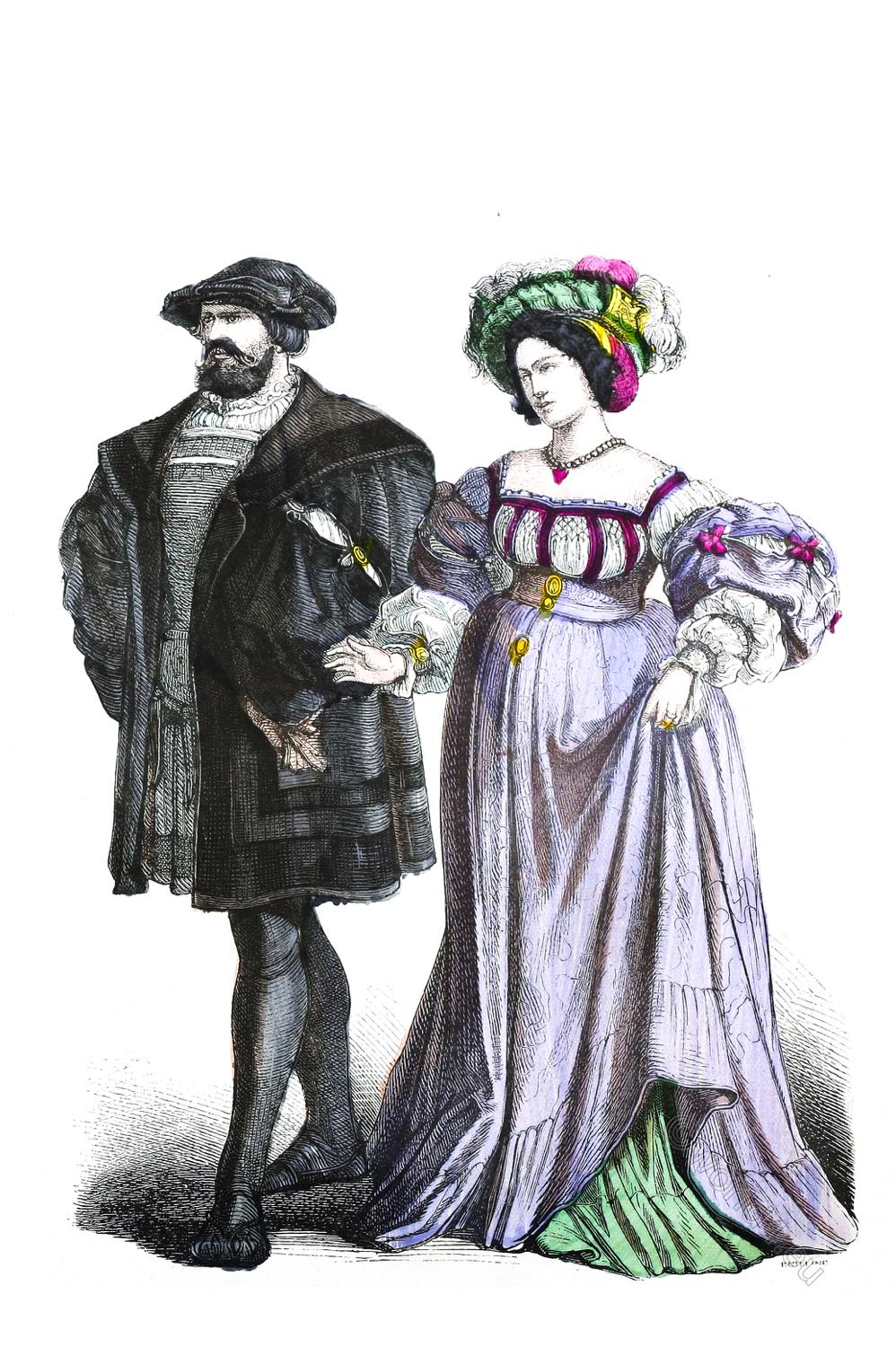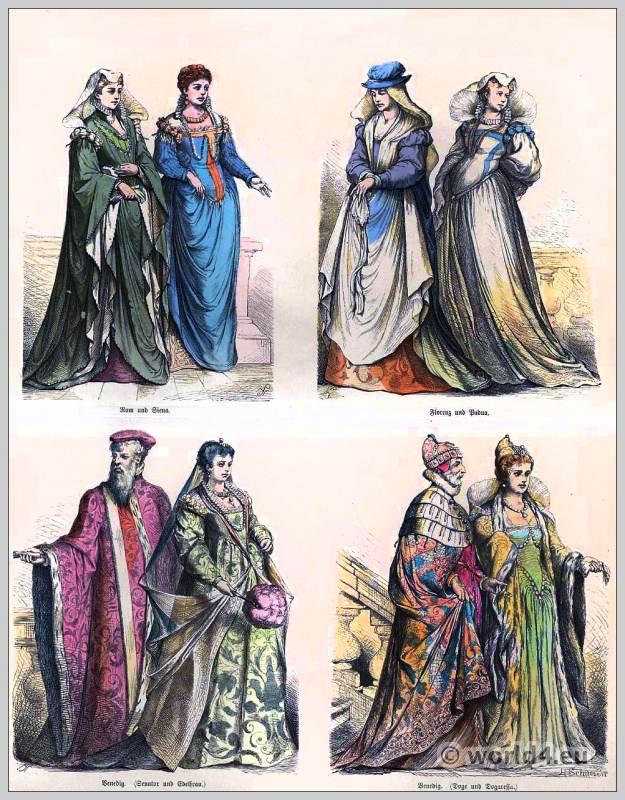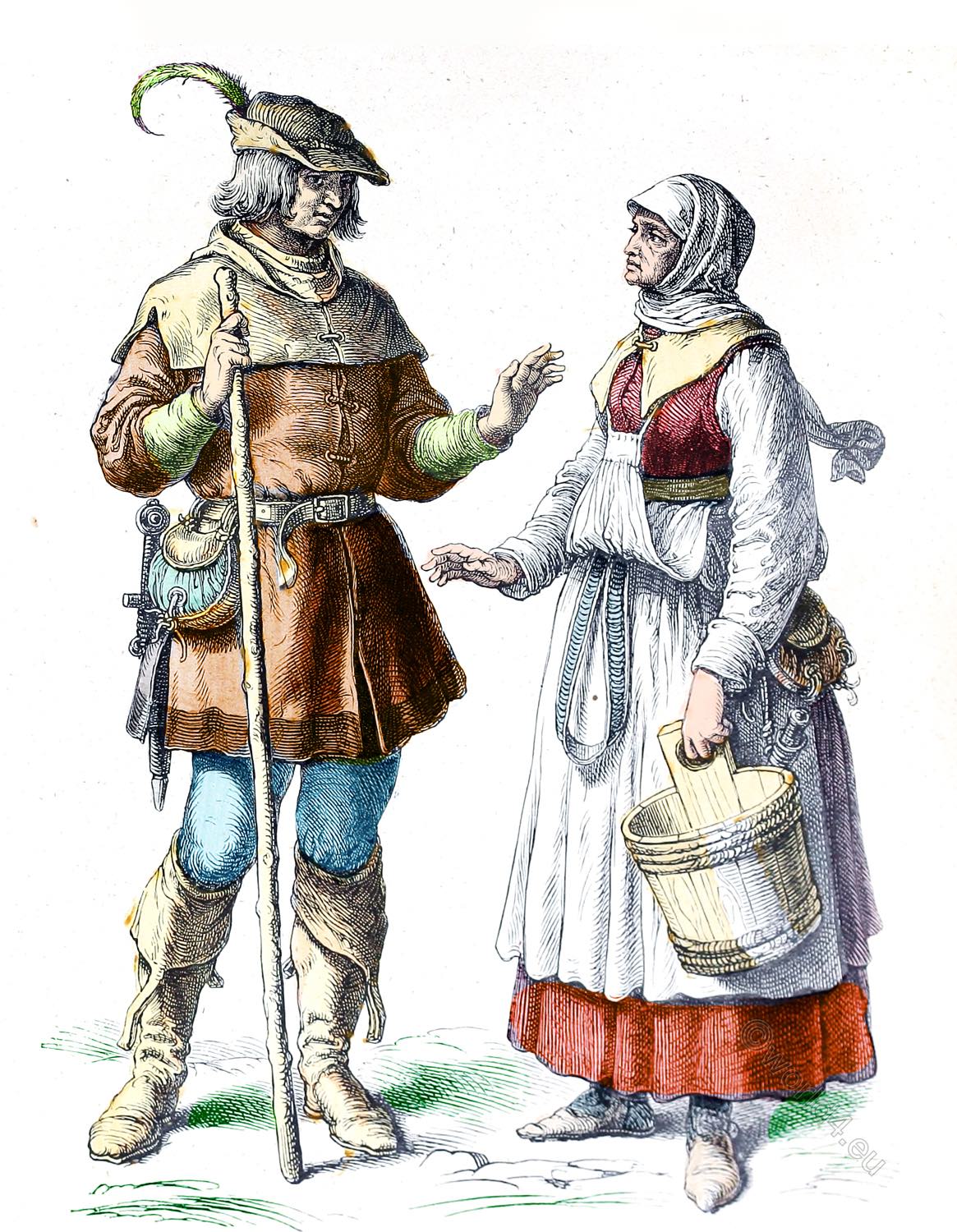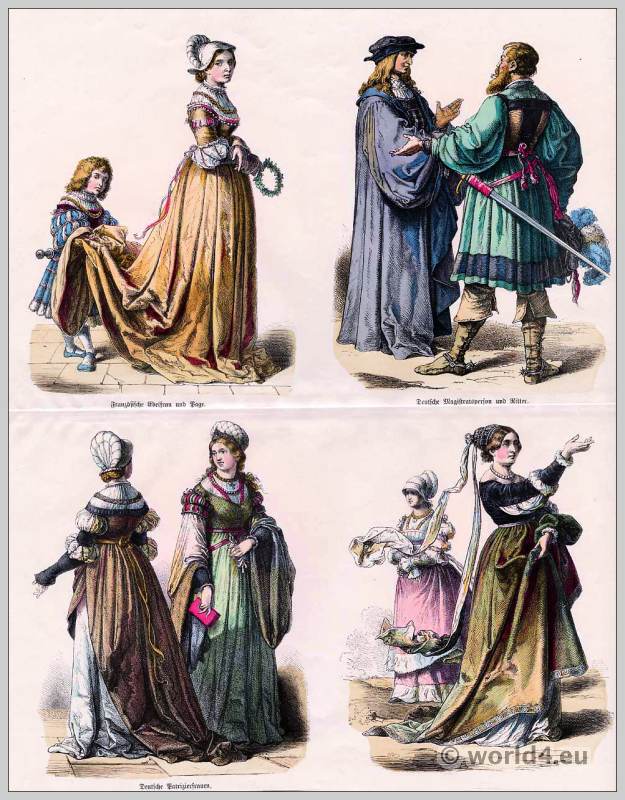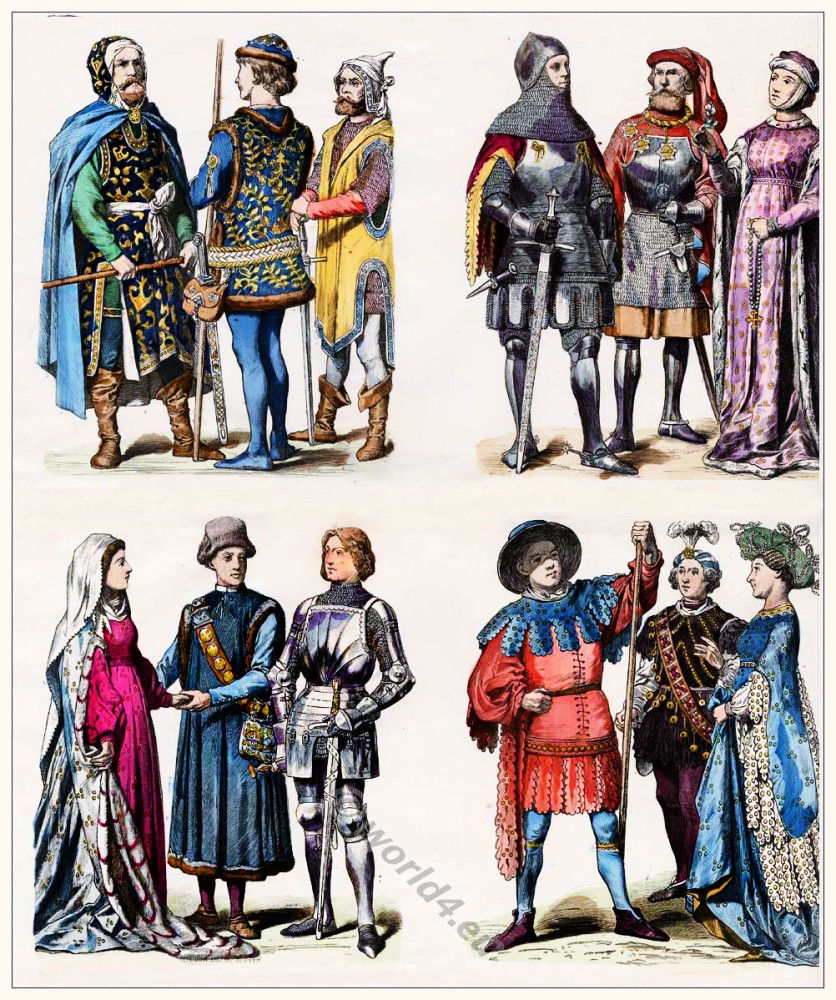
On the history of costumes. Eleventh sheet. First third of the XVI century. Illustration by E. Fröhlich. Munich illustrated book no. 419.
German scholar and citizen.
Exampel of German fashion at the time of the Renaissance and Reformation 16th century. Clothing in 1530. A German citizen and a scholar.
The diversity of individual development possibilities became characteristic of the image of man in the Renaissance. The human being with his language and history was at the centre of humanist reflections.
The Renaissance was pioneered by humanist scholars who made antique writings, literature and other sources accessible to their contemporaries because they saw them as guiding principles to be followed.
This gave rise to a humanist educational concept that, for optimal development, focused on a combination of knowledge and virtuous activity or on a contemplative existence dedicated to exploration and knowledge – depending on individual possibilities and social-political constellation.
The clothing in this period was characterized by the expression of the dignity and freedom of movement. The scholar wearing a sleeveless Schaube, underscoring his gentility. The Schaube was a shell-shaped cape. Depending on the status of the citizen, in the length varied and was often surrounded at the edges with fur.
The dress of the woman has a small square neckline emerges through the tunic. Often the neckline of the dress was decorated with ruffles. The sleeves are cut closely and extend to the hands. On her head she wears a Calotte.
Source: Münchener Bilderbogen 1848 to 1898. On the history of costumes. Published by Braun & Schneider. Kgl. Hof-und Universitäts-Buchdruckerei von Dr. C. Wolf & Sohn in Munich.
Related
Discover more from World4 Costume Culture History
Subscribe to get the latest posts sent to your email.

